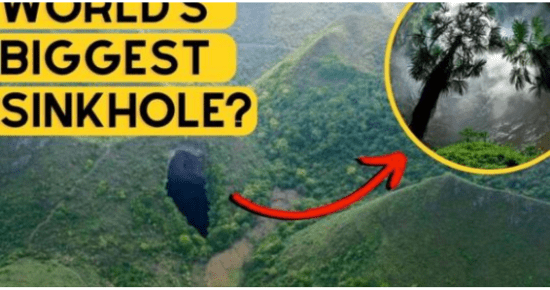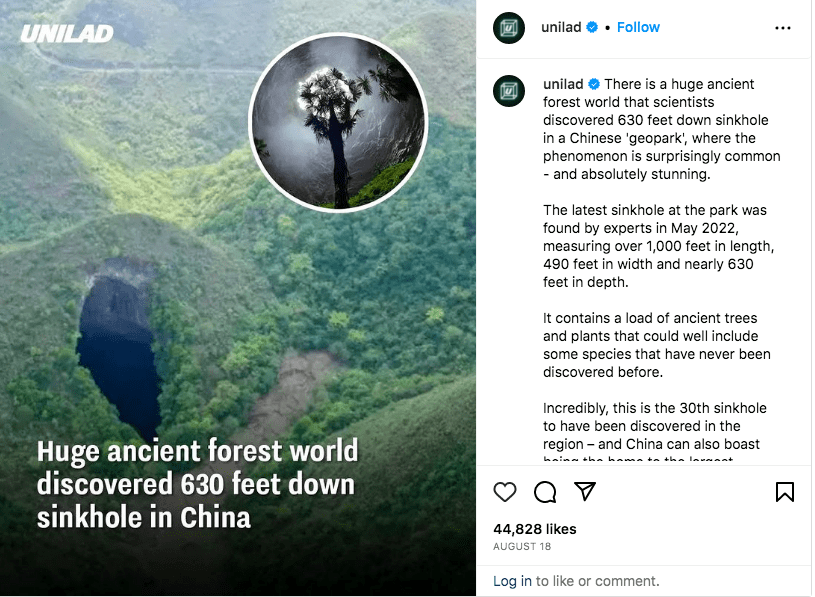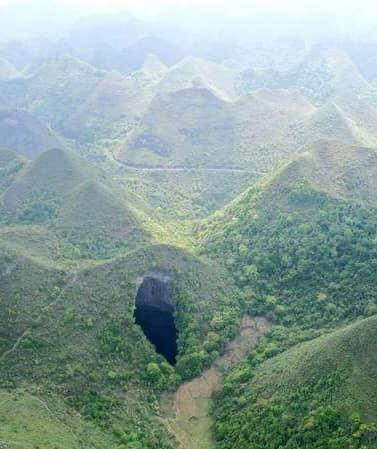
Welcome to the incredible world of the Leye-Fengshan Global Geopark in China! Deep underground, scientists have recently made a groundbreaking discovery that will leave you in awe. Hidden 630 feet below the surface, a colossal ancient forest has been unearthed in a sinkhole within this magnificent geopark.
The Leye-Fengshan Global Geopark, located in the Guangxi Zhuang Autonomous Region, is renowned for its natural wonders. This geopark proudly holds the world record for having the longest natural bridge and caves, as recognized by UNESCO. Its mesmerizing landscape is primarily composed of sedimentary rocks, with more than 60% being thick carbonate rocks dating back to the Devonian to Permian periods.
This geopark is shaped by two major subterranean rivers, the Bailang and Poyue, which have carved out a stunning “S”-shaped structure across the karst regions of Leye and Fengshan counties. Throughout this remarkable area, you can find a host of karst geosites, including karst springs, high karst peak clusters (fengcong), natural bridges, poljes, karst windows (tiankengs), extensive caves, fault zones, minor folds, and even intriguing fossils such as those of giant pandas and Neogene stratigraphic sections.

What makes the Leye-Fengshan Global Geopark truly exceptional is its display of tiankengs (gigantic sinkholes) and high fengcong karst. This geopark showcases the different stages of karst development and houses the world’s most breathtaking karst windows, highest density of tiankengs, largest cave chambers recorded worldwide, and the world’s longest natural bridges. It is a testament to the marvels of nature.
Recently, in May 2022, scientists made an extraordinary sinkhole discovery within the geopark. This incredible sinkhole spans approximately 630 feet in depth, 490 feet in width, and over 1,000 feet in length. Within this colossal sinkhole lies a plethora of mature trees and plants, raising the possibility of discovering new species. The expedition leader, Chen Lixin, has already identified three cave openings within the sinkhole and believes they could uncover species not yet documented by science. Some of the trees in the area reach heights of over 130 feet, indicating the richness and diversity of the underground ecosystem.
To gain even more insights into this astonishing find, the scientists consulted George Veni, director of the National Cave and Karst Research Institute. According to Veni, China’s karst terrain stands out for its astonishing sinkholes and grand cave entrances, creating a dramatic spectacle unlike many other places in the world. In contrast, sinkholes in other regions may be more modest in size and require a bit of squeezing to enter the cave entrances.

While this discovery may seem incredible, it is not entirely surprising to experts. The extensive karst landscape in southern China is a natural breeding ground for fascinating caves and sinkholes. Veni explains that the erosion of rock in karst environments is mainly caused by slightly acidic rainwater. As rainwater seeps into the ground, it absorbs carbon dioxide, increasing the soil’s acidity. This acidic water then permeates the bedrock’s fissures, gradually creating tunnels and cavities. When these subterranean spaces become extensive enough, the rock above collapses, giving rise to sinkholes.
The sinkhole recently discovered in the Leye-Fengshan Global Geopark is the thirty-first known opening in the region, adding to the already remarkable karst wonders found in China. One such wonder is Xiaozhai Tiankeng, boasting the world’s largest pit. This sinkhole is an astounding 2,100 feet deep, 2,000 feet long, and 1,760 feet wide. Its unique interior features a stream, creating a landscape reminiscent of the popular game Minecraft that will capture your imagination.
Are you ready to explore the breathtaking beauty and remarkable discoveries of China’s Leye-Fengshan Global Geopark? Get ready to share the excitement with your family and friends, as this awe-inspiring geopark is sure to leave you speechless!





